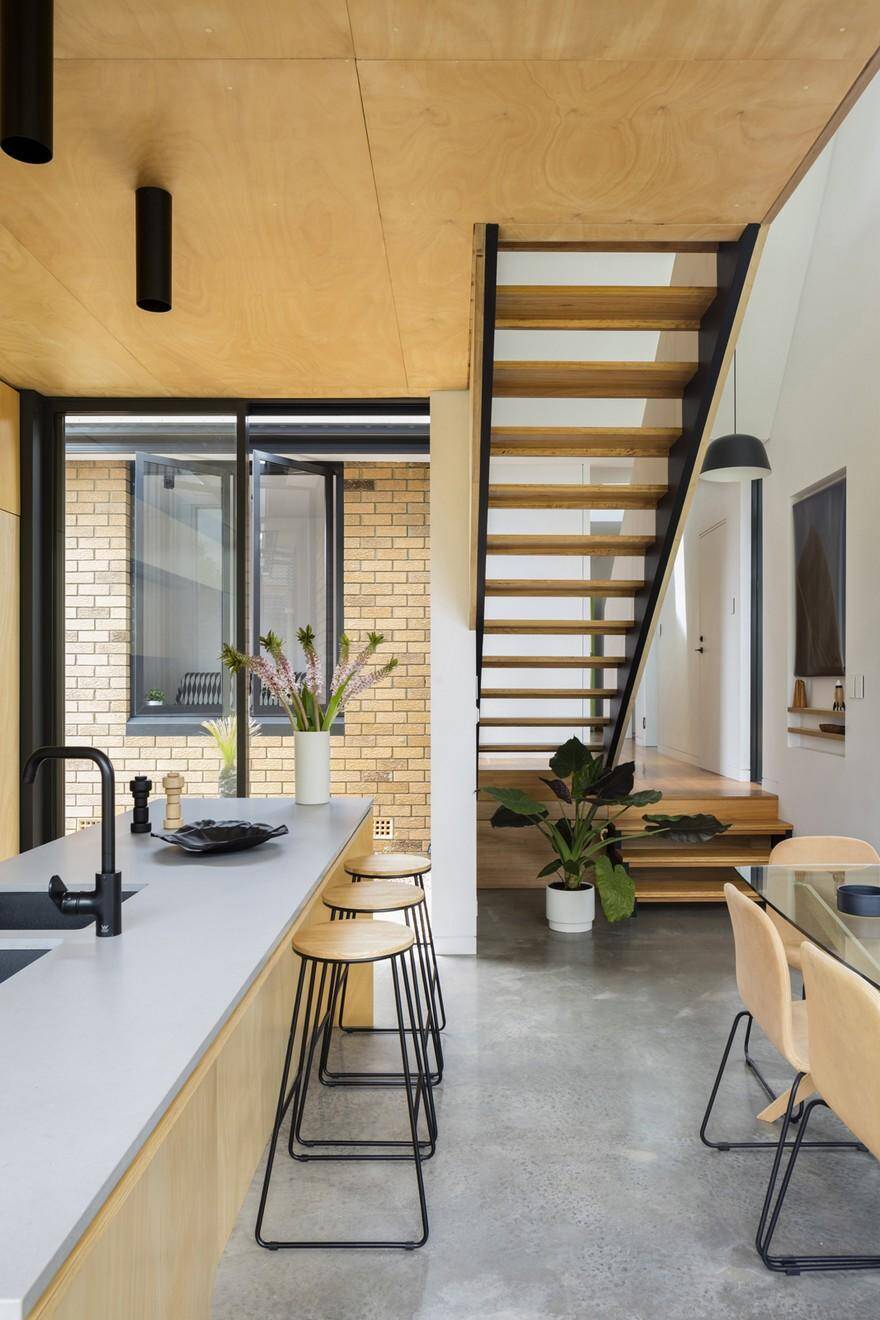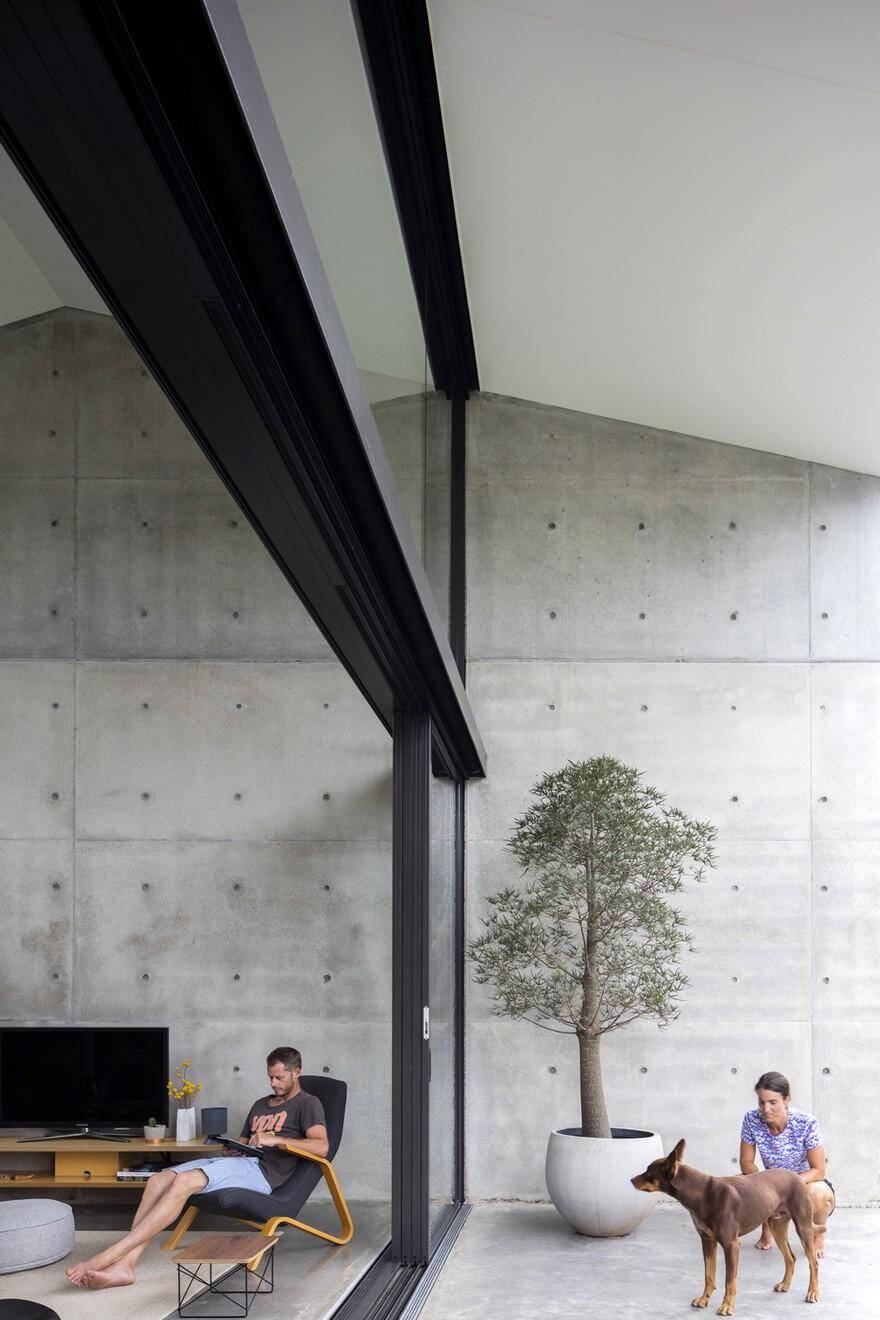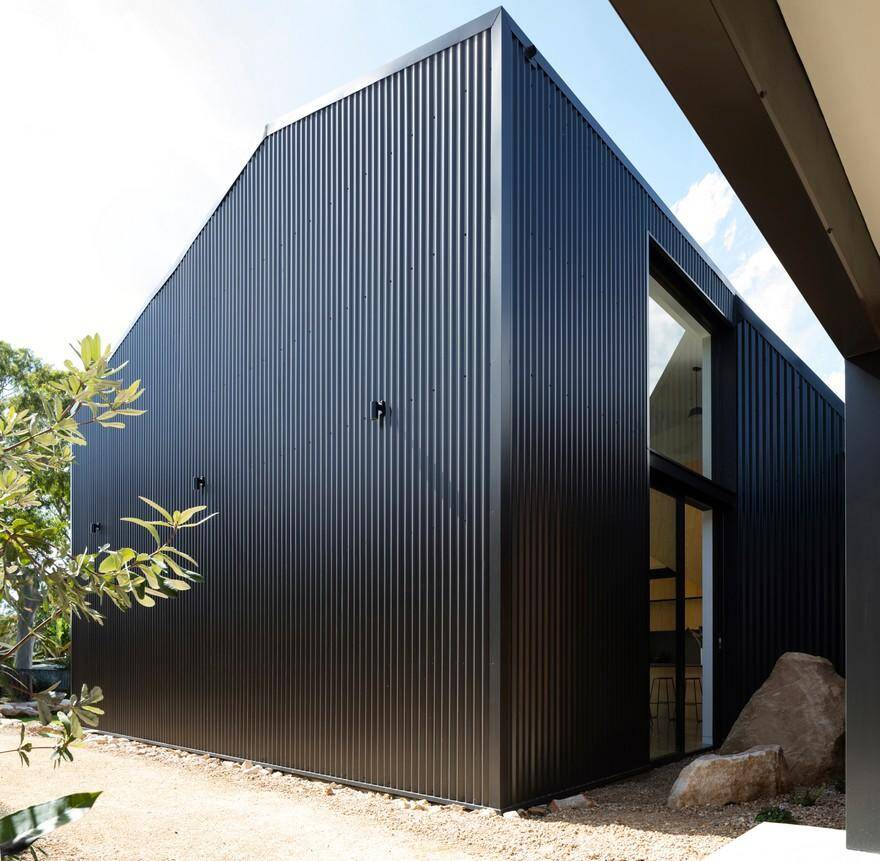Project: Binary House / Contemporary New Addition
Architects: Christopher Polly Architect
Location: Woolooware, Sydney, Australia
Structural Engineer: SDA Structures
Hydraulic Engineer: ACOR Consultants
Landscape: Fig Landscapes
Surveyor: Junek & Junek
Planner: Damian O’Toole Town Planning
Year 2018
Photography: Brett Boardman Photography
“Chris Polly has been an integral part of our 4+ year journey in turning our 1960’s modest brick house into something that discreetly improved the understated original character from the street while opening it up into an amazing contemporary new addition which provides perfect living spaces in which to enjoy our time.”
A crafted volume is carefully connected to the retained and refashioned rear of an original 1960’s yellow brick envelope to enact clear planning, cost and environmental values in an articulated binary composition – a cellular and private front, with an open and public rear that expands to its setting.
The retained bungalow allows the cultural value of its suburban type to be preserved within its locality, while also supporting environmental and budget outcomes. Its interior carefully configures a program of bedrooms and utility spaces, with vaulted skylights carved within the original roof expanding several spaces to light and sky. A sharply folding intermediary form spatially unlocks a compressed front hall while allowing the location of interstitial courtyards for light, ventilation and multiple aspects at the centre of the plan – in turn promoting an interplay of private and public rooms across front and rear zones.
This contemporary new addition is a two-storey pavilion which provides a volumetrically expansive double-height living area, and serves as a generously proportioned ‘garden room’ with large apertures capturing sky and landscape views. Its stair element extends the established circulation condition from the original front entry, while also marking a loose threshold for the arrangement of two smaller rooms at one end of its volume. It achieves improved privacy from neighbours while concurrently providing desired transparency for unfettered spatial relationships within its volume and across its two parts for strengthened connections to its place.
It employs an approach to enable a strong focus of the memory and character of the existing front fabric within the new rear spaces, while an interior bi-chromatic strategy of considered honey and grey material tones strongly reference the two distinct exterior materials.
A northern blade screen and a pinched rear profile enable greater solar access onto the thermal mass of a reverse concrete-veneer wall and ground floor slab, with its cantilevered terrace edge and sculpted step element doubling as seats for direct enjoyment of the garden.

























